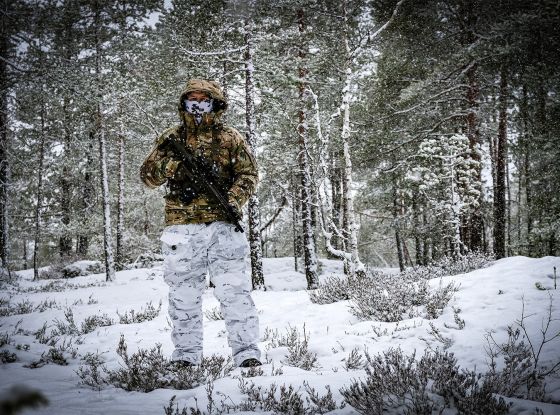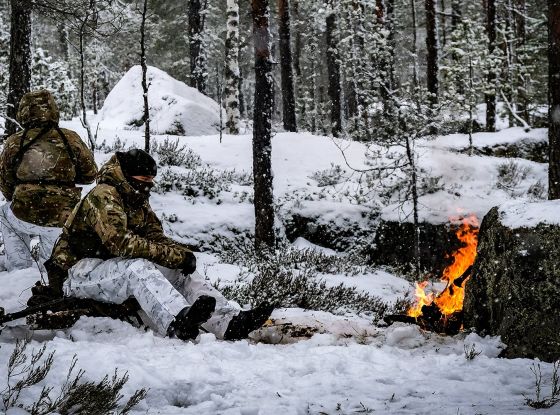Tactical tracking sharpens an operator’s ability to navigate the unknown, interpret the environment, and make decisions under pressure. Whether following a suspect’s trail, uncovering hidden threats, or piecing together clues in hostile terrain, tracking bridges ancient knowledge with modern operational demands.
In this blog post:
At its core, tracking is about keen observation. Every scuff, impression, or bent blade of grass holds meaning—if you know how to interpret it. The real challenge is spotting these subtle indicators amidst the chaos of natural or urban settings.
To sharpen your skills, start by mastering these four essential techniques:
- Pace-to-Pace Tracking
- Using Sunlight for Enhanced Visibility
- Tracking Across Different Terrains
- Extracting Intelligence from a Single Track
Each of these fundamental skills lays the groundwork for advanced strategies that transform tactical tracking into a crucial asset for success in high-pressure situations.
The Importance of Tactical Tracking
Tactical tracking goes beyond merely following a trail; it’s about collecting intelligence and maintaining a strategic edge in dynamic environments. Whether pursuing a fugitive, locating missing persons, or countering adversarial actions, tracking enhances situational awareness and provides a tactical advantage.
By reading ground disturbances—such as footprints, disturbed vegetation, or other spoor—operators can predict movement patterns, uncover hidden threats, and gather vital intelligence. Even a basic understanding of tracking can significantly improve decision-making in high-stakes scenarios.
![]()
1. Pace-to-Pace Tracking: Building the Foundation
Pace-to-pace tracking serves as the foundation for all tracking methods. It’s a systematic approach where you follow an individual’s trail step by step, analyzing every detail left behind. This technique offers crucial insights into their movement patterns, physical condition, and even their mental state.
Key Elements of Pace-to-Pace Tracking
- Identifying unique track patterns: Everyone has a distinct walking style. By analyzing the depth, angle, and spacing of footprints, you can deduce information about their weight, fatigue levels, or potential injuries. For example, a deeper impression on one side might suggest someone is carrying a heavy load or favoring an injured leg.
- Recognizing evasive tactics: Tracks can often indicate attempts to avoid detection. Look for signs like backtracking, sudden changes in direction, or stepping into thick vegetation. These subtle tactics are important clues about the individual's intent.
- Interpreting speed and direction: The spacing between footprints and their alignment with the terrain can reveal whether someone is moving quickly, cautiously, or erratically. A hurried pace might suggest urgency or being chased, while more measured steps could indicate careful consideration or fatigue.
The better you understand the nuances of pace-to-pace tracking, the better you’ll be at piecing together the puzzle of human movement. Refine this foundational skill with this in-depth guide.
![]()
2. Using the Sun as a Tracking Tool
The sun can be a valuable asset in tactical tracking. Its light, particularly at low angles, can reveal ground disturbances that might otherwise be overlooked. By mastering sunlight-based techniques, you’ll enhance your ability to spot even the most subtle clues.
Techniques for Sunlight-Based Tracking
- Maximizing contrast with low-angle light: Early morning or late afternoon sunlight creates long shadows that highlight depressions, such as footprints or tire marks. These shadows bring out details that are invisible under midday sunlight.
- Employing backlighting and side lighting: Position yourself so the sun illuminates the ground from an angle. This approach enhances texture and depth, making it easier to identify tracks on flat or uniform surfaces.
- Spotting inconsistencies with shadow play: Disturbed soil, bent grass, or displaced pebbles catch light differently than undisturbed areas. These inconsistencies become more apparent when viewed under angled light.
With the right approach, sunlight becomes more than illumination—it becomes intelligence. Learn to harness it in this detailed post.
![]()
3. Tracking Across Varied Terrain
No two terrains are alike, and each presents unique challenges for trackers. Whether you’re navigating rocky landscapes, dense forests, or arid deserts, adapting your techniques is crucial.
Key Techniques for Surface-Specific Tracking
- Understanding track aging: Tracks degrade differently depending on the surface. On sandy terrain, wind quickly erodes details, while tracks on wet soil might retain their shape longer. Recognizing these patterns helps estimate how long ago the tracks were made.
- Identifying micro-signs: On hard surfaces like rocks or concrete, footprints may not be visible. Instead, look for subtle signs such as scuff marks, shifted gravel, or faint dirt streaks. In vegetative areas, bent grass or broken twigs can also act as clues.
- Enhancing visibility with light: Low-angle sunlight or a flashlight can help reveal faint impressions or disturbances on difficult surfaces. Practice scanning the area from multiple angles to increase your chances of spotting hidden tracks.
A skilled tracker tailors their approach to the terrain they’re navigating. Learn how to handle varied terrains in this post.
![]()
4. Extracting Intelligence from a Single Track
A single track can provide a wealth of information when analyzed properly. Whether it’s a partial footprint, a smudge on a rock, or a bent blade of grass, each clue has the potential to unravel critical details about the person you’re tracking.
Insights Derived from Individual Tracks
- Footwear type: Recognizing the type of footwear can reveal details about the individual’s profession, environment, or preparedness. Military boots may indicate tactical experience, while casual shoes could suggest a civilian.
- Weight and load: The depth of a footprint can hint at the individual’s weight or the gear they’re carrying. A heavier load typically leaves a deeper impression.
- Movement characteristics: Drag marks or uneven spacing between footprints might suggest fatigue, an injury, or urgency. These details can inform your pursuit strategy.
- Group size and dynamics: Overlapping tracks or differences in shoe size can indicate group movement. Analyzing these patterns helps estimate group size, formation, and cohesion.
No track is too small to matter. Learn how to maximize the intel from even the faintest signs in this blog.
![]()
Advanced Tracking Strategies
Once you have the foundational skills, advanced strategies can enhance your tracking abilities:
- Predicting Movement Patterns: Anticipate a subject’s actions by analyzing terrain and behavior. Will they seek cover, follow natural paths, or steer clear of open areas? Understanding these tendencies keeps you one step ahead.
- Counter-Tracking Awareness: Subjects might use counter-tracking methods like covering footprints or choosing hard surfaces. Recognizing these tactics and analyzing secondary signs—like broken vegetation—can help you stay on their trail.
- Team-Based Tracking: Effective tracking often requires coordination among a team:
- Lead tracker: Analyzes tracks and determines the path forward.
- Flankers: Look out for additional signs or potential ambushes.
- Rear security: Keeps watch to ensure the team isn’t being followed.
To explore advanced techniques and enhance your skills, check out the Tactical Tracking series. This series provides comprehensive insights into mastering the art of tracking and applying it effectively in real-world scenarios.
![]()
Conclusion
Tactical tracking is both an art and a science. By refining your skills in pace-to-pace tracking, utilizing sunlight, adapting to terrain, and analyzing single tracks, you’ll become more adept at reading the environment and piecing together valuable intelligence.
Whether you’re pursuing an evasive subject, locating missing individuals, or gathering data for strategic planning, these techniques are indispensable tools for any operator.



